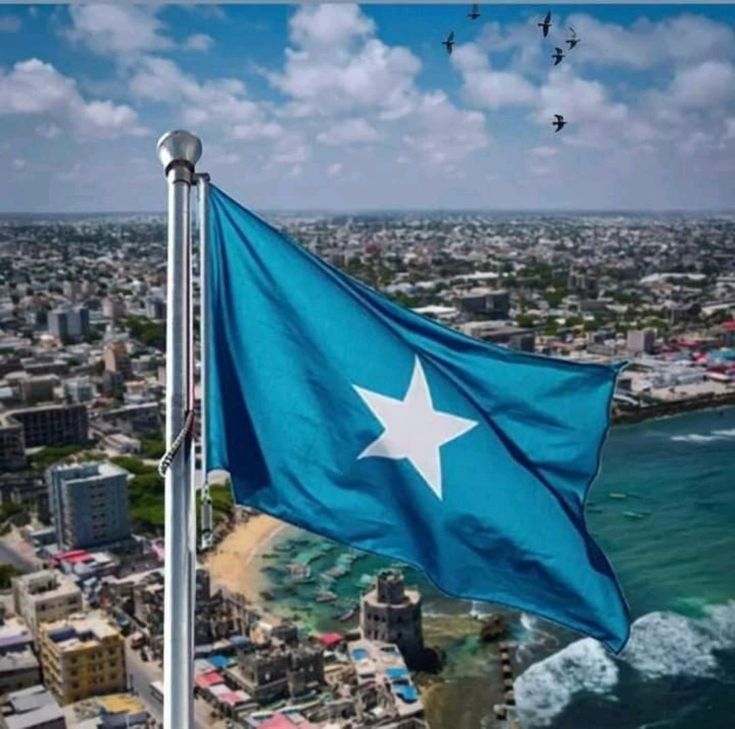The History of Somalia: From Ancient Civilization to the Colonial Era

Somalia, located in the Horn of Africa, has a rich and diverse history that stretches back thousands of years. Its story is one of ancient trade routes, the rise of powerful Islamic sultanates, dynamic interactions with regional powers, and eventual partition by colonial empires. This article explores the long and proud history of Somalia up until the onset of colonial rule in the late 19th century.
1. Ancient Times: The Land of Punt and Early Trade
Somalia is one of the oldest inhabited regions in Africa. Archaeological and historical evidence suggests that early human settlements existed in the area as far back as 12,000 years ago. These early communities were primarily Cushitic-speaking pastoralists who developed complex societies centered on livestock, agriculture, and trade.
One of the most significant early references to Somalia comes from ancient Egypt. Around 2500 BCE, Egyptian records mention the “Land of Punt” — a fabled land known for its riches, including frankincense, myrrh, ivory, and gold. Most historians believe that Punt was located in what is now modern-day Somalia and parts of Eritrea and Djibouti. The trade between Egypt and Punt marked the beginning of Somalia’s long-standing role in the international trading system.
2. The Arrival of Islam and the Rise of Coastal City-States (7th–10th Century)
With the advent of Islam in the 7th century CE, the Somali coast entered a new era of cultural and religious transformation. Arab and Persian traders, traveling across the Red Sea and the Indian Ocean, introduced Islam to the coastal communities. These communities quickly adopted the new religion, which profoundly influenced Somali culture, law, language, and education.
During this time, important port cities like Zeila, Berbera, and Mogadishu flourished as vibrant Islamic city-states. These cities served as major hubs in the Indian Ocean trade network, linking Somalia to Arabia, Persia, India, and even China. Somali merchants exported goods such as livestock, hides, ivory, incense, and gum arabic, while importing textiles, spices, and luxury goods.
3. The Medieval Period: Sultanates and Regional Power (11th–16th Century)
Between the 11th and 16th centuries, several powerful Somali-led Islamic sultanates emerged. These states played a vital role in regional politics and trade, and many of them controlled vast territories across the Horn of Africa.
Ajuran Sultanate (13th–17th Century)
One of the most influential medieval Somali states, the Ajuran Sultanate, ruled much of southern Somalia, as well as parts of eastern Ethiopia and northern Kenya. The Ajuran dynasty centralized power, built impressive fortifications, developed advanced irrigation systems, and controlled trade routes from the interior to the coast. It was also a strong promoter of Islamic learning and architecture.
Sultanate of Mogadishu
Centered in the capital city of the same name, the Sultanate of Mogadishu was known for its prosperity and cosmopolitan culture. Mogadishu minted its own currency and was renowned by travelers such as Ibn Battuta, who visited in the 14th century and praised its wealth and strong Islamic faith.
Warsangali and Geledi Sultanates
In the northeast and south, the Warsangali and Geledi Sultanates rose to power. These states maintained their independence for centuries and often formed alliances or engaged in warfare with neighboring groups and empires.
4. The Ethiopian Wars and Foreign Invasions (16th Century)
In the early 16th century, one of the most dramatic chapters in Somali history unfolded when Imam Ahmad ibn Ibrahim al-Ghazi, also known as Ahmed Gurey, launched a large-scale jihad against the Christian Ethiopian Empire. Backed by the Ottoman Empire and Somali warriors, Ahmad Gurey conquered vast areas of Ethiopia, even threatening its capital.
In response, Ethiopia sought assistance from Portugal, which sent troops and weapons. The resulting conflict, known as the Ethiopian–Adal War, was long and brutal, ultimately ending in the death of Ahmad Gurey and the retreat of Somali forces. While it did not result in a permanent Somali occupation of Ethiopia, the war significantly altered the balance of power in the region.
5. Decline of Sultanates and Rise of European Interest (17th–19th Century)
By the 17th century, internal conflicts, droughts, and external threats began to weaken the once-powerful Somali sultanates. Trade routes shifted, and piracy increased along parts of the coast. Despite these challenges, Somali society remained resilient, with clan-based systems maintaining local governance and Islamic institutions continuing to thrive.
At the same time, European powers began to take a greater interest in the Horn of Africa due to its strategic location along the Red Sea and Indian Ocean trade routes. Explorers, missionaries, and colonial agents started visiting the Somali coast in increasing numbers.
6. The Scramble for Africa and the Partition of Somalia (Late 19th Century)
The final decades of the 19th century marked the beginning of European colonialism in Somalia. As part of the wider “Scramble for Africa,” the major European powers divided Somali-inhabited territories among themselves without regard for ethnic or cultural unity:
- British Somaliland: The British established a protectorate over the northwestern part of Somalia (modern-day Somaliland) in 1887. It was mainly used as a supply base for their naval interests in the Red Sea.
- Italian Somaliland: Italy gradually took control of southern and central Somalia, establishing it as a colony in the 1880s and 1890s. They built infrastructure and sought to integrate the region into their East African empire.
- French Somaliland: France claimed the area around Djibouti in 1862, later formalizing it as French Somaliland.
- Ethiopia: With the support of European allies, the Ethiopian Empire expanded into the Somali-inhabited Ogaden region.
- British Kenya: Parts of the Somali-inhabited north were included in the British East Africa protectorate (modern Kenya).
7. Somali Resistance to Colonial Rule
Colonial domination did not go unchallenged. The most famous resistance movement was the Dervish State, led by Sayyid Mohammed Abdullah Hassan, a Somali religious and nationalist leader. From 1899 to 1920, his forces engaged in armed resistance against the British, Italians, and Ethiopians.
Operating from the interior, the Dervish movement established a mobile Islamic state and inspired Somali pride and unity. The British, frustrated by his persistence, finally used aircraft to bomb his capital in Taleh in 1920 — one of the first aerial bombardments in Africa.
Conclusion: A Legacy of Strength and Unity
The history of Somalia until the colonial period is one of resilience, innovation, and deep-rooted cultural identity. From the ancient Land of Punt to the Islamic sultanates and the anti-colonial struggles, the Somali people have maintained their traditions, language, and religion despite centuries of foreign intervention.
Understanding this rich and dynamic history is essential to appreciating the foundations of modern Somali identity — and to recognizing the resilience of a nation that has always stood proudly at the crossroads of Africa and the wider world.
